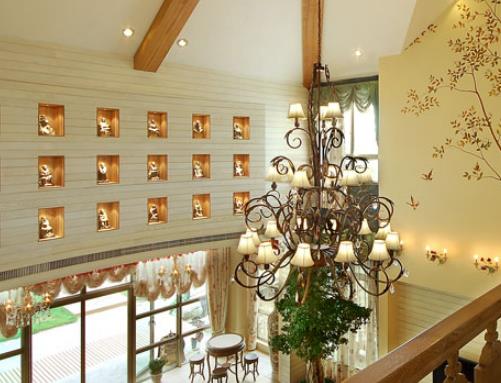What do you mean by blooming on the other side?
The meaning of flowers blooming on the other side
Legend has it that after passing through the ghost gate, there is a road called Huangquan Road, where there are only flowers but no leaves on the other side of the road. Flowers and leaves do not see each other, miss each other forever, at the end of the road there is a river called forget Chuan River, there is a bridge over the river called Naihe Bridge. Walking across the bridge, there is an earth platform called Wangxiang platform. There is a pavilion called Meng Po Pavilion near the table of Wangxiang. A woman named Meng Po is waiting there, handing a bowl of Meng Po soup to every passer-by. There is a stone called Sansheng Stone by the Qianchuan River. Drinking Mengpo soup makes people forget everything. Sansheng stone records the past life, this life and the afterlife. Walk through the bridge, take a last look at the world on the Wangxiang platform, and drink a cup of water to boil this life.

Legend has it that people die first to the ghost gate, out of the ghost gate, through Huangquan Road, to the forgettable river, is how to bridge. The bridge is divided into three layers, the upper layer is red, the middle layer is yellow, and the lowest layer is black. The lower class becomes more and more dangerous, and it is full of lonely ghosts who cannot be reincarnated. Those who do good in their lifetime go to the top, those who do good and evil go to the middle, and those who do evil go to the lower level. no, no, no. no, no, no.
However, there is a mother-in-law on the bridge. If you want to cross the bridge, you must drink Mengpo soup. If you don't drink it, you can't cross the bridge. If you can't cross the bridge, you can't be reincarnated. Those who have drunk Mengpo Tang will forget all the ties in this life and enter the samsara path without concern to begin the next reincarnation.

Meng Po Tang is also known as forget water or forget worry powder, as soon as you drink it, you forget the past life and this life. A lifetime of love and hatred, ups and downs, all forgotten with this bowl of Mengpo soup. People who care about this life, people who hate in this life, are strangers in the afterlife, do not know each other. Everyone in the world has his own bowl here, and the Mengpo soup in the bowl is actually the tears of a living person's life.
When everyone is alive, he will cry: because of joy, because of sorrow, because of pain, because of hate, because of sorrow, because of love. Meng Po collected their tears and boiled them into soup. When they left the world and walked on to the bridge, they were made to drink, forget the sorrows of love and hate when they were alive, clean, and re-enter the six ways, either as immortals, or as human beings, or as animals.
Not everyone will drink Mengbo soup willingly. Because in this life, there will always be people who have loved and don't want to forget. Mother-in-law Meng will tell him: all the tears you shed for her life have been boiled into this bowl of soup. If you drink it, you will drink your love for her. The last memory in the eyes of the person who came was the one he loved in this life. after drinking the soup, the figure in his eyes slowly faded, and his eyes were as clear as a newborn baby.

In order to see your favorite in the next life, you don't have to drink Meng Po Tang, then you have to jump into the forgotten River and wait thousands of years before you can be reincarnated. In thousands of years, you may see the person you love most in this life walk on the bridge, but the words can't communicate, you can see her, she can't see you. For thousands of years, you have seen her cross the bridge over and over again and drink bowl after bowl of Mengbo soup. You hope she will not drink Mengpo soup, but you are afraid that she will not be able to bear the suffering of a thousand years of suffering in the Sichuan River.
The other shore flower blossoms for a thousand years and falls for a thousand years. The flowers and leaves are born wrong and will never meet again. The flowers on the other side are blooming on the other side, but what can be done in front of the bridge? Those who go to the kingdom of death walk on these beautiful flowers to the prison of the underworld. "the flowers on the other side, blooming on the other side, only see the flowers, not the leaves."
Lycorisradiata is a perennial herb. There are globose bulbs underground, surrounded by dark brown membranous scales. The leaves are narrow in band, dark green in color, drawn from the base, born at the end of autumn and fall at the beginning of summer. Flowering period: late summer and early autumn, about July to September. The flowering stem is 30ml 60 cm long, and usually 6 flowers are arranged into an umbrella shape. The petals are oblanceolate, the perianth is red (also white), curled backward, the margin is wrinkled, and the perianth tube is very short; stamens and styles are prominent, the flower shape is small, and the perimeter is more than 6 cm. Flowers do not see leaves when they bloom, flowers do not see when there are leaves, flowers and leaves do not meet, they are born wrong. This kind of flower often grows in stone crevices and graves in the wild, so some people say that it is a "flower on the road to the grave".

Source of the name
Because the characteristic of Lycoris is to first take out scape (peduncle) to blossom, and then leaves at the end of flowering or after blooming; there are other species that draw leaves first and blossom after the leaves are withered, so there are no leaves when the flowers bloom, no flowers when there are leaves, and flowers and leaves do not meet each other and cherish each other. Therefore, there is the saying that "flowers on the other side, blossoms on the other side, only flowers, no leaves, born wrong". Spring is a bulb, leaves grow in summer, blossom in autumn, and flower stems fade slowly in winter, because of the sadness and love that can never meet. That's why it's called the other shore flower.
"at that time, the Blessed one, surrounded by the four crowds, offered respect, respect and admiration; for the Bodhisattvas said the Mahayana Sutra, protected by the immeasurable righteous Bodhisattva Dharma Buddha; the Buddha said that this sutra has already been. There are four flowers, namely, Tian Yu Mantra Hua, Mahama Dhara, Manzhu Shahua and Mahaman Zhu Shahua. And scattered Buddhas and the general public. " -- the French Sutra
Other shore flower
Volume one. "
The wonderful Dharma Lianhua Sutra decides to doubt again:
Yun he Mandala?
Bai Yuanhua is like a wind eggplant flower.
Yunhe Manzhu Shahua?
Red Tuanhua.

The other shore flowers, Manzhu Shahua and Mandala, are the flowers of the heavenly world depicted in the Buddhist sutras.
Manzhu Shahua, Maha Manzhushahua, Mantra Hua, Maha Mantra Hua, Fentalhua, Maha Fentohua and so on are derived from the Sanskrit Buddhist Sutra and have been recorded in the Mahayana Lotus Sutra. Maha means Maha, Mahayana is pronounced Mahayana in Sanskrit, and Yana means carrying, and Hua means flower in ancient Chinese. It means flowers on the ground. In the West, she was born by the mixture of the blood of gods and demons.
According to the Great Dictionary of Buddha Light, Manzhusha, manjusaka in Sanskrit and manjusaka in Balinese. Also translated as soft Hua, Bai Yuanhua, Ruyi Hua, Guhua, Manzhu Yan Hua. Those who spend a lot of money are called Mahamanzhushahua. Manzhu Shahua is one of the four kinds of smallpox, which is the name of the flower in the sky. Its flowers are fresh and white and soft, and the days can fall on this flower at will. It is solemnly said that the Ashram can be cut off from bad karma.
In the Southern Dynasty, the book of Fa Hua Yi written by Liang Dai Fayun was translated into red flowers by Manzhu Shahua.
After the withered leaves, the scape blossoms, so the flowers on the other side can't see the leaves when they bloom, and when they have leaves, they don't see each other, and they cherish each other. Therefore, there is the saying that "flowers on the other side, blossoms on the other side, only flowers, no leaves, born wrong". Spring is a bulb, leaves grow in summer, blossom in autumn, and flower stems fade slowly in winter, because of the sadness and love that can never meet. That's why it's called the other shore flower.
"at that time, the Blessed one, surrounded by the four crowds, offered respect, respect and admiration; for the Bodhisattvas said the Mahayana Sutra, protected by the immeasurable righteous Bodhisattva Dharma Buddha; the Buddha said that this sutra has already been. There are four flowers, namely, Tian Yu Mantra Hua, Mahama Dhara, Manzhu Shahua and Mahaman Zhu Shahua. And scattered Buddhas and the general public. " -- the French Sutra
Other shore flower
Volume one. "
The wonderful Dharma Lianhua Sutra decides to doubt again:
Yun he Mandala?
Bai Yuanhua is like a wind eggplant flower.
Yunhe Manzhu Shahua?
Red Tuanhua.

The other shore flowers, Manzhu Shahua and Mandala, are the flowers of the heavenly world depicted in the Buddhist sutras.
Manzhu Shahua, Maha Manzhushahua, Mantra Hua, Maha Mantra Hua, Fentalhua, Maha Fentohua and so on are derived from the Sanskrit Buddhist Sutra and have been recorded in the Mahayana Lotus Sutra. Maha means Maha, Mahayana is pronounced Mahayana in Sanskrit, and Yana means carrying, and Hua means flower in ancient Chinese. It means flowers on the ground. In the West, she was born by the mixture of the blood of gods and demons.
According to the Great Dictionary of Buddha Light, Manzhusha, manjusaka in Sanskrit and manjusaka in Balinese. Also translated as soft Hua, Bai Yuanhua, Ruyi Hua, Guhua, Manzhu Yan Hua. Those who spend a lot of money are called Mahamanzhushahua. Manzhu Shahua is one of the four kinds of smallpox, which is the name of the flower in the sky. Its flowers are fresh and white and soft, and the days can fall on this flower at will. It is solemnly said that the Ashram can be cut off from bad karma.
In the Southern Dynasty, the book of Fa Hua Yi written by Liang Dai Fayun was translated into red flowers by Manzhu Shahua.
Related
- Wuhan Hospital Iron Tree Blooming Result Was Instantly Frightened by the Gardener Master
- Which variety of camellia is the most fragrant and best? Which one do you like best?
- What is the small blue coat, the breeding methods and matters needing attention of the succulent plant
- Dormancy time and maintenance management of succulent plants during dormancy
- Minas succulent how to raise, Minas succulent plant pictures
- What are the varieties of winter succulent plants
- How to raise succulent plants in twelve rolls? let's take a look at some experience of breeding twelve rolls.
- Attention should be paid to water control for succulent plants during dormant period (winter and summer)
- Watering experience of twelve rolls of succulent plants
- Techniques for fertilizing succulent plants. An article will let you know how to fertilize succulent plants.



